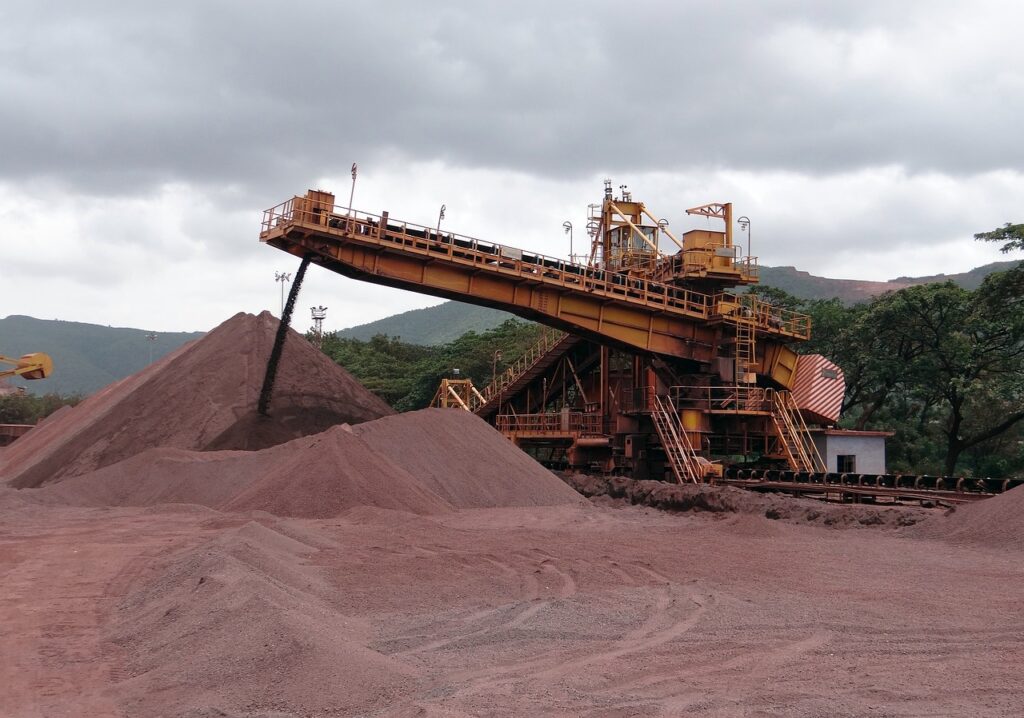The era of big dividends for mining companies is coming to an end – for now.
Investors should prepare for lower dividends from some of the most widely held mining stocks as commodity prices fluctuate and companies prepare for higher capital spending, according to Morgan Stanley. This means that the era of big dividends for mining companies is coming to an end – for now.
While shareholder payouts from iron ore mining companies have proved resilient over the past six months – with Rio Tinto, BHP and Fortescue Metals all beating expectations – iron ore prices have fallen more than 20 percent since January, reaching a 10-month low of $96. 70 per ton this week.
Morgan Stanley told clients that there were particular risks to BHP’s dividend payments given the elevated debt position of the world’s largest mining company and costs related to the Samarco mining disaster in Brazil, with legal proceedings in the UK due to start in October.
The broker predicted that BHP’s payout ratio would be 55% of earnings for the second half of the financial year, falling to 50% in the next. It would be at the bottom of the mining company’s policy to pay out at least 50% of profits every six months.
That’s also despite Morgan Stanley analysts predicting that iron ore prices would bounce back to $120 per ton in the third quarter as inventories in China draw down and access to new seaborne remains limited.
Commodity strategist Amy Gower said that until the ramp-up of the Simandou iron ore project in Guinea came to market, the broker’s supply and demand model looked balanced, which at least supported prices above the cost of production.
Morgan Stanley’s main stock pick in the iron ore sector is Rio Tinto, which has rights to a large part of the Simandou project. It also rates Deterra Royalties as “overweight”, while BHP has an “equal weight” rating. The broker is still “underweight” Fortescue.
Finding a floor
Analysts also flagged that shareholder payouts from lithium stocks may also be at risk due to the ongoing volatility in battery metal markets.
In particular, it referred to concerns about Mineral Resources’ balance sheet and the company’s recently upgraded guidance on investment.
That prompted Morgan Stanley to forecast a payout ratio of just 20 percent for fiscal years 2024 and 2025, well below MinRes’s policy of paying out 50 percent of its underlying net profit.
Lithium producer IGO is expected to declare investor payouts of 20 percent and 25 percent in the next two fiscal years, which is also towards the lower end of the company’s policy of paying 20 percent to 40 percent of free cash flow.
As for the ASX’s largest lithium producer, Pilbara Minerals, Morgan Stanley believes the company will not pay dividends for 2024 and 2025 despite its policy of paying out 20 to 30 percent of free cash flow.
While Pilbara recently lowered its capital expenditure forecast for this fiscal year in an effort to maintain its balance sheet amid falling lithium prices, the company still has significant spending plans to expand its operations.
Morgan Stanley’s dividend forecasts coincided with the broker’s forecasts for commodity prices in the second quarter, indicating that lithium prices were close to finding a floor.
The price of China’s lithium carbonate has increased by 18 percent this year, which analysts attributed to environmental inspections in China, where a third of lepidolite production is being halted.
Even so, the still-low prices are driving production cuts, removing 78,000 tons, or 6 percent of global supply, according to Morgan Stanley’s estimates since December.
While the broker acknowledged that lithium prices looked good in the short term, it warned that if environmental cuts prove to be temporary and supply increases as expected, lithium would remain in a surplus.
“While a floor on lithium prices may be near, the battery supply chain’s inventory and offline supply that can be restarted keeps us on the sidelines,” said Morgan Stanley equity analyst Rahul Anand.
Citi’s commodities team last week turned bearish on the short-term outlook for lithium, suggesting that traders should take profits after the price rise.
With the valuation of lithium stocks still high, Morgan Stanley’s top pick in the space is MinRes with an “equal weight” rating. The broker moved IGO to “underweight” and it has the same recommendation on Pilbara Minerals.
Lithium stocks also continue to dominate the list of ASX’s most shorted stocks, led by Pilbara Minerals.
About the Viking
With Viking’s signals, you have a good chance of finding the winners and selling in time. There are many securities. With Viking’s autopilots or tables, you can sort out the most interesting ETFs, stocks, options, warrants, funds, and so on. Vikingen is one of Sweden’s oldest equity research programs.
Click here to see what Vikingen offers: Detailed comparison – Stock market program for those who want to get even richer (vikingen.se)













